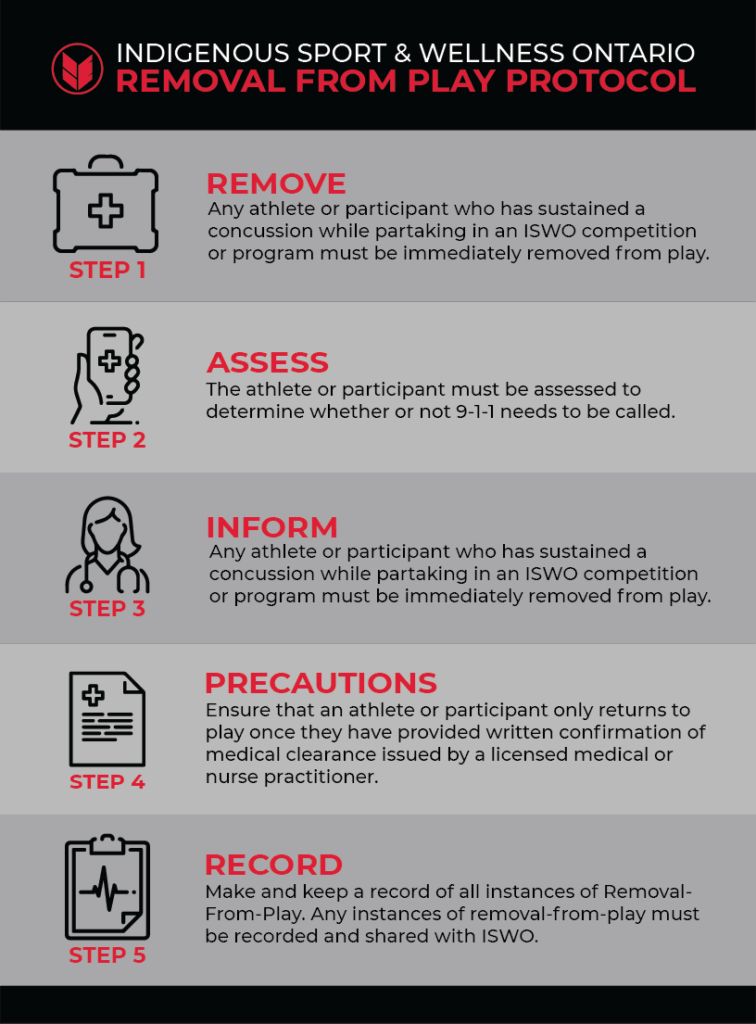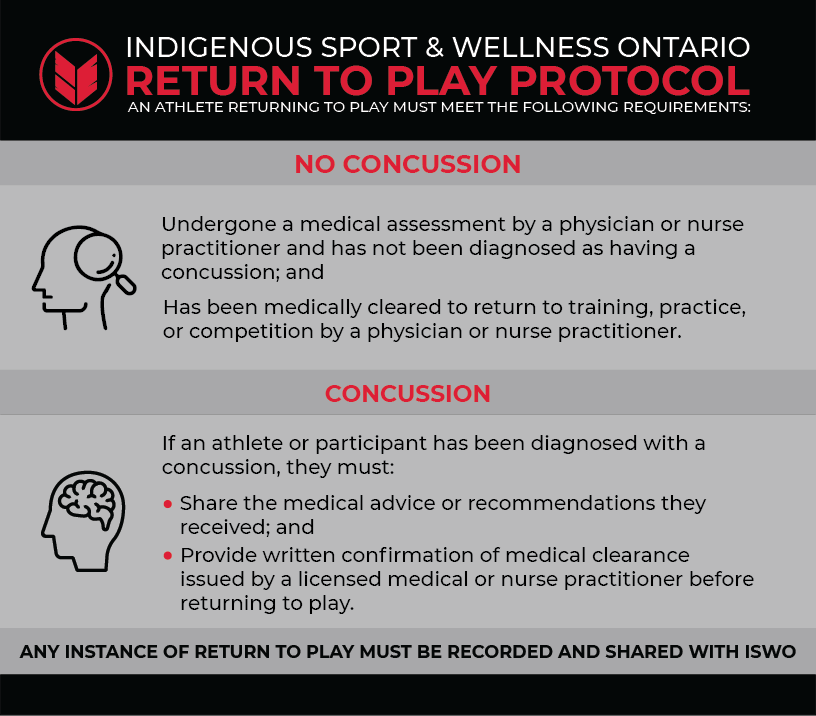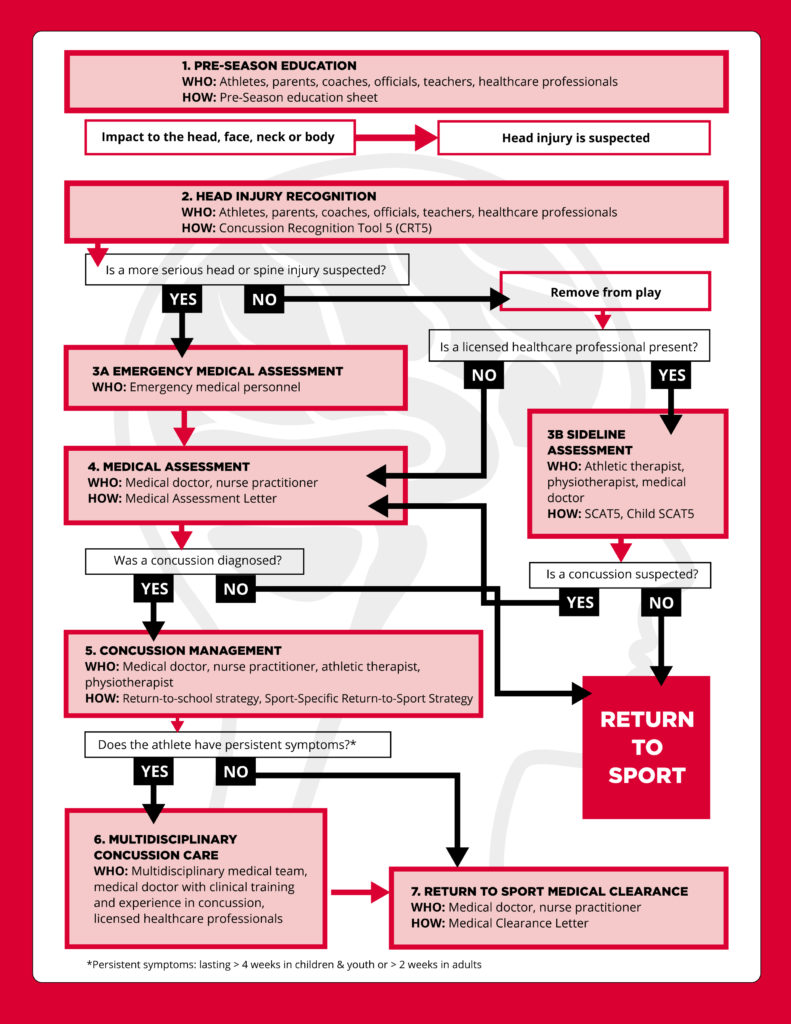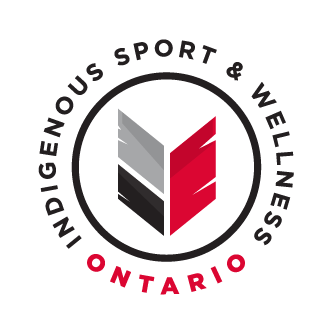Concussion Safety Protocols
WHAT IS A CONCUSSION
A concussion can’t be seen on an x-ray, CT scan, or MRI and is a brain injury. A concussion may occur after a blow to the head, face, or neck, and may also be caused by a blow to the body. A concussion can happen at any time: at school, at home, or at work; following a car or bike accident; or when participating in games, sports, or any other physical activity.
Concussions are serious head injuries, but the effects are typically short-term. Sometimes concussion can lead to long-lasting symptoms and long-term effects.
Symptoms and signs of a concussion include:
- Headache
- Dizziness
- Ringing in the ears
- Memory loss
- Nausea
- Light sensitivity
- Drowsiness
- Depression
If someone loses consciousness or has a seizure call 911 immediately. Otherwise, visit a doctor.
RATIONALE
Rowan’s Law was introduced to Ontario in 2019, and requires all coaches and team trainers to review their sport organization’s Concussion Code of Conduct each year. The code sets out expectations and rules of behaviour to minimize concussions while playing sport.
Despite recent increased attention focusing on the impact of concussions, there is a continued need to improve concussion education and awareness. Optimizing the prevention and management of concussions depends highly on an annual education program for all sport stakeholders (athletes, parents, coaches, officials, teachers, trainers, and licensed healthcare professionals), utilizing current evidence-informed approaches that can prevent concussions, and more serious forms of head injury, and help identify and manage an athlete with a suspected concussion.
CONCUSSION CODE OF CONDUCT REQUIREMENTS
Indigenous Sport & Wellness Ontario’s (“ISWO”) Concussion Code of Conduct requires that at a minimum, athletes, parents/guardians of those athletes under the age of 18, coaches, and team trainers, must:
- Commit to fair play and respect for all.
- Commit to concussion recognition and reporting, including self-reporting of possible concussions, and reporting to a designated person when an individual suspects that another individual may have sustained a concussion.
- Commit to supporting the Return-to-Play process.
- Commit to sharing any pertinent information regarding incidents of a Removal-from-Play with the athlete’s school and any other sport organization with which the athlete is registered.
- Commit to providing opportunities before and after each training, practice, and competition to enable athletes to discuss potential issues related to concussions (applicable to coaches only).
- Commit to zero-tolerance for prohibited play that is considered high-risk for causing concussions.
- Acknowledge the mandatory expulsion from competition for violating zero-tolerance for prohibited play that is considered high-risk for causing concussions.
Acknowledge the escalating consequences for those who repeatedly violate the concussion code of conduct.
REMOVAL-FROM-PLAY REQUIREMENTS
ISWO must establish Return-to-Play and Removal-from-Play protocols for its athletes (collectively hereinafter referred to as the “ISWO’s Protocols”) that contain the following minimum components which:
- Detail the process to ensure the immediate removal of an athlete, whether from competition or practice, who is suspected of having a concussion (by completing the Removal-From-Play form provided by ISWO).
- Mandates the identification of an individual (the “Designate”) at any ISWO organized, managed or sponsored event, program or competition ( the “ISWO Competitions or Programs”) and which sets out and describes the specific duties, responsibilities and authority of the Designate, including, but not limited to:
- Effect the immediate removal of an athlete who is managed, trained or supervised by ISWO or who is a participant in an ISWO Competition or Program (the “Athlete”) who has sustained a concussion (irrespective of where the concussion occurred), and for Athletes under the age of 18, to advise and inform the parent/guardian of the Athletes suspected concussion, of the Athlete’s removal from play, and any next steps that ISWO’s Protocols require.
- Call 911 if in the Designate’s opinion doing so is a medical necessity in all the circumstances if an athlete is suspected of having suffered a concussion.
- Upon removal, inform the Athlete (and parent/guardian, if applicable) that the Athlete is required to undergo a medical assessment by a physician or nurse practitioner before the Athlete will be permitted to return to training, practice or competition, according to ISWO Protocols.
- Ensure that an Athlete who has been removed, in accordance with ISWO Protocols, is only able to return to training, practice or competition, in accordance with the terms, conditions and provisions of ISWO’s Protocols.
- Requirement to make and keep a record of all instances of Removal-From-Play.

RETURN-TO-PLAY REQUIREMENTS
ISWO’s Protocols must establish specific Return-To-Play Protocols for Athletes, or such other individuals, that ISWO has knowledge of, or reasonably believes, has sustained a concussion and whether that Athlete has been removed from play in accordance with ISWO’s Protocols and requires the following:
- The identification of a designate who shall be required and authorized to:
- Ensure that an Athlete who has sustained a concussion or is suspected of having sustained a concussion, does not return to training, practice or competition until permitted to do so in accordance with the ISWO’s Return-To-Play Protocol.
- Receive all confirmations from the Athlete (or parent/guardian if the Athlete is under 18 years of age) in writing about the outcome of the Athlete’s medical assessment by a physician or nurse practitioner, regarding the status of Athlete’s diagnosis, and/or medical clearance to return to unrestricted training, practice, or competition.
- Inform an Athlete who has been diagnosed as having a concussion (or parent/guardian if the Athlete is under 18 years of age) about the importance of disclosing the diagnosis to other sport organizations that the Athlete is involved in, or the school which the athlete attends.
- ISWO’s Return-To-Play Protocol shall detail the process that must be followed to return an Athlete to training, practice, or competition after the Athlete has sustained a concussion or is suspected of having sustained a concussion (irrespective of where the concussion was/or was suspected of having occurred).
The process must include the following requirements:
- An Athlete must only be permitted to return to training, practice, or competition if the Athlete or parent/guardian of the Athlete, if applicable, provides written confirmation to the designated person in a satisfactory manner to the designated person, that the Athlete has:
- Undergone a medical assessment by a licenced medical or nurse practitioner and has not been diagnosed as having a concussion; and
- has been medically cleared to return to training, practice, or competition by that licenced medical or nurse practitioner.
- An Athlete who is diagnosed by a licensed medical or nurse practitioner as having a concussion must proceed through the graduated ISWO’s Return-To-Play Protocol steps that are set out in the ISWO Protocols.
- The graduated ISWO’s Return-To-Play Protocol steps may set out activities specific to the sport as well as intended outcomes of the activities that the Athlete must successfully complete before moving on to the next step, and must require the Athlete (or parent/guardian if the Athlete is under 18 years of age) to:
- Share the medical advice or recommendations they receive with a designated person, if any, before an Athlete is permitted to return to training, practice, or competition through the graduated ISWO’s Return-To-Play Protocol steps.
- Provide written confirmation of medical clearance issued by a licenced medical or nurse practitioner to a designated person before the Athlete is permitted to move onto unrestricted practice, training, or competition as part of graduated ISWO’s Return-To-Play Protocol steps.
- ISWO’s Return-to-Play Protocol shall require the making and keeping of a record of the Athlete’s progression through the graduated ISWO’s Return-To-Play Protocol steps up until the Athlete (or parent/guardian if the athlete is under 18 years of age), has provided written confirmation of medical clearance by a licensed medical or nurse practitioner to a designated person.
Other Requirements:
- ISWO must make the ISWO Protocols available to:
- Designate and designated persons; and
- Athletes (or parents/guardian if athlete is under 18 years of age) who have been removed from further training, practice or competition in accordance with ISWO’s Protocols;
- Such other individuals that ISWO deems may be directly affected by the application of the ISWO’s (i.e. coaches, volunteers, ISWO staff, funders, program partners, etc.).
- For greater certainty, ISWO’s Protocols apply to all Athletes registered for ISWO Competitions or Programs (and not the protocol of the other sport organizations that the Athlete is registered with).
- With respect to personal information collected in implementing ISWO’s Protocols, ISWO will take reasonable steps to limit the collection, use, access, and disclosure of personal information to that which is reasonably necessary for the purpose of carrying out the implementation of ISWO’s protocols.
- ISWO shall create and maintain a retention policy for personal information and retain, disclose, and dispose of personal information in a reasonably secure manner.

ISWO’S CONCUSSION STRATEGY
Introduction
ISWO has developed a Concussion Strategy to help guide the management of Athletes who may have a concussion or a suspected concussion, as a result of participation in ISWO Events. This strategy aligns with the Canadian Guideline on Concussion in Sport and is adapted from Canadian Guideline on Concussion in Sport (Parachute, 2017). “Recognition, diagnosis and timely clinical assessment of suspected concussions may help facilitate earlier recovery, reduce the risk of early complications and avoid further head and musculoskeletal injuries (3)”. All sport stakeholders in ISWO’s events and programming including Athletes, parents, coaches, officials, volunteers, and staff are responsible for the recognition and reporting of Athletes who may demonstrate visual signs of a head injury or who report concussion-related symptoms.
Purpose
This Concussion Strategy covers the recognition, medical diagnosis, and management of Athletes, players, and sport participants who may sustain a suspected concussion during a sport activity. It aims to ensure that Athletes with a suspected concussion receive timely and appropriate care and proper management to allow them to return back to their sport safely. This Concussion Strategy may not address every possible clinical scenario that can occur during sport-related activities but includes critical elements based on the latest evidence and current expert consensus.
This Concussion Strategy is intended for use by all individuals who interact with Athletes within the context of ISWO Competitions or Programs, including Athletes, parents, coaches, officials, teachers, trainers and licensed healthcare professionals.
Click here to view ISWO’s Concussion Strategy.

STEPS FOR ISWO STAFF, COACHING STAFF, SPORT MANAGERS AND TEAM TRAINERS
Requirements
In order to improve concussion safety in amateur competitive sport, all ISWO coaches, assistant coaches, sport managers, and team trainers must know how to implement the ISWO Protocols.
Step 1: Concussion Training
- Complete Making Headway – Concussion eLearning Series
- To begin, coaches will require a NCCP#. If a coach has never taken an NCCP course and requires a NCCP#, the coach must register with The Locker.
- Coaches must expect to spend 60-90 minutes completing each module. Each completed module will be recorded on a coach’s coaching transcript as a professional development achievement.
Step 2: Review Important Documents
- Concussion Guide for Coaches
- Concussion Awareness Resources
- ISWO’s Concussion Code of Conduct (Annual Review Required)
- ISWO’s Sport Concussion Protocols (Annual Review Required)
Step 3: Application to Practice
- Review, sign and submit the ISWO Coaches Code of Conduct prior to beginning any coaching role with ISWO.
- Discuss concussions with parents and Athletes during pre-season meeting
- Share the Concussion Guide documents with everyone involved in the coach’s selected sport (i.e. coaches, parents, and Athletes).
- Have all athletes complete an ISWO Player Code of Conduct that ensures safe play, with consequences for breach of safe play (this can be completed either digitally or in-person, but must be submitted before any participation is allowed).
- Ensure that the coach’s Athletes are wearing properly fitted equipment and obey the rules of the sport.
- Promote an open relationship between the coach and their Athletes so that the Athletes feel safe and comfortable reporting injuries and understand the risks of not doing so.
- Review the coach’s sport specific resources for drills and activities that can reduce the risk of concussion and other injuries.
ADDITIONAL RESOURCES
http://www.coachesontario.ca/concussion/
Patricios JS, Ardern CL, Hislop MD, et al. Implementation of the 2017 Berlin Concussion in Sport Group Consensus Statement in contact and collision sports: a joint position statement from 11 national and international sports organisations. Br J Sports Med Published Online First: 02 March 2018. doi: 10.1136/bjsports-2018-099079.
McCrory P, Meeuwisse W, Dvorak J, et al. Consensus statement on concussion in sport – the 5th international conference on concussion in sport held in Berlin, October 2016. Br J Sports Med 2017; http://dx.doi.org/10.1136/bjsports-2017-097699.
Patricios JS, Ardern CL, Hislop MD, et al. Implementation of the 2017 Berlin Concussion in Sport Group Consensus Statement in contact and collision sports: a joint position statement from 11 national and international sports organisations. Br J Sports Med Published Online First: 02 March 2018. doi: 10.1136/bjsports-2018-099079.

